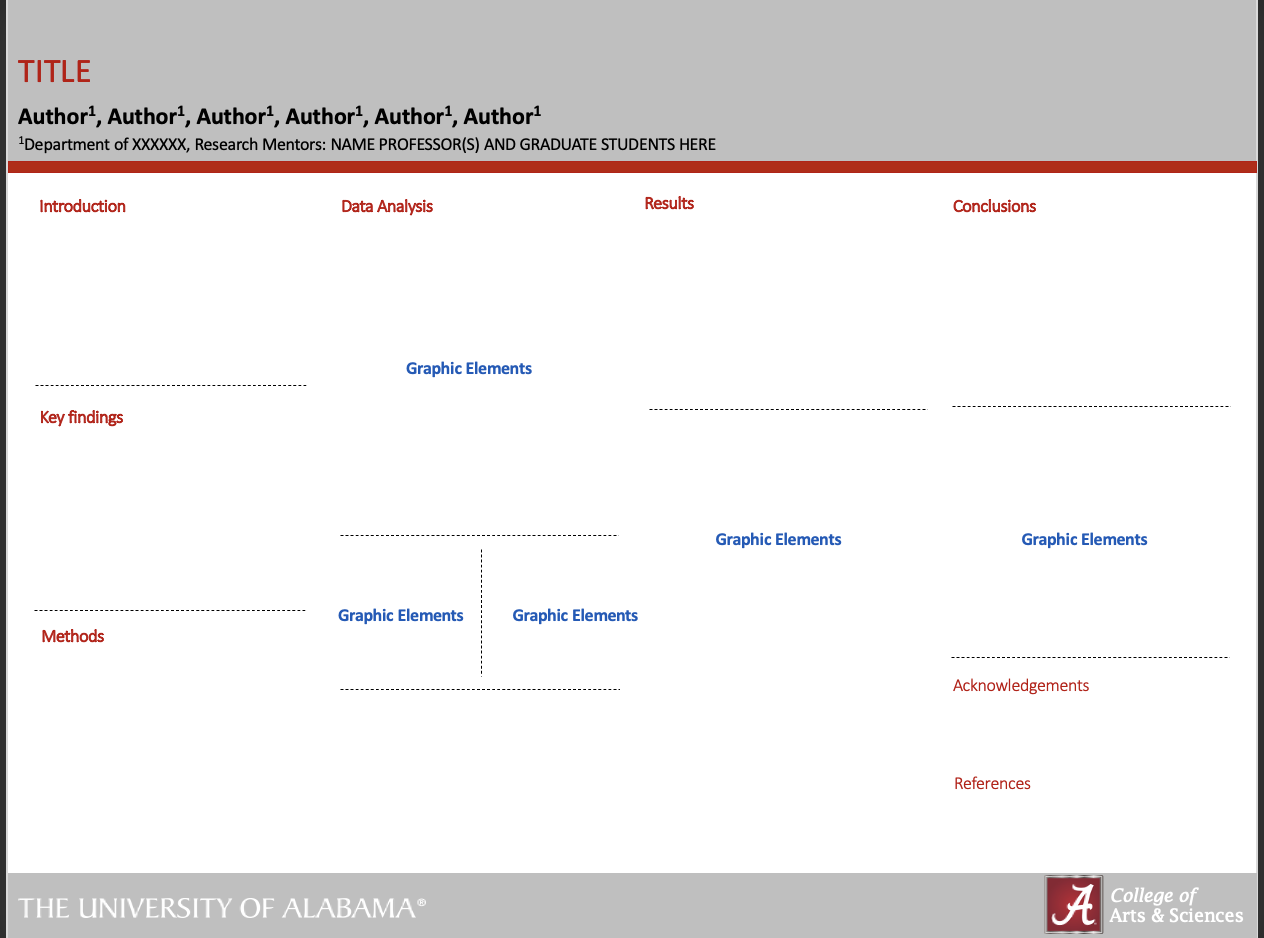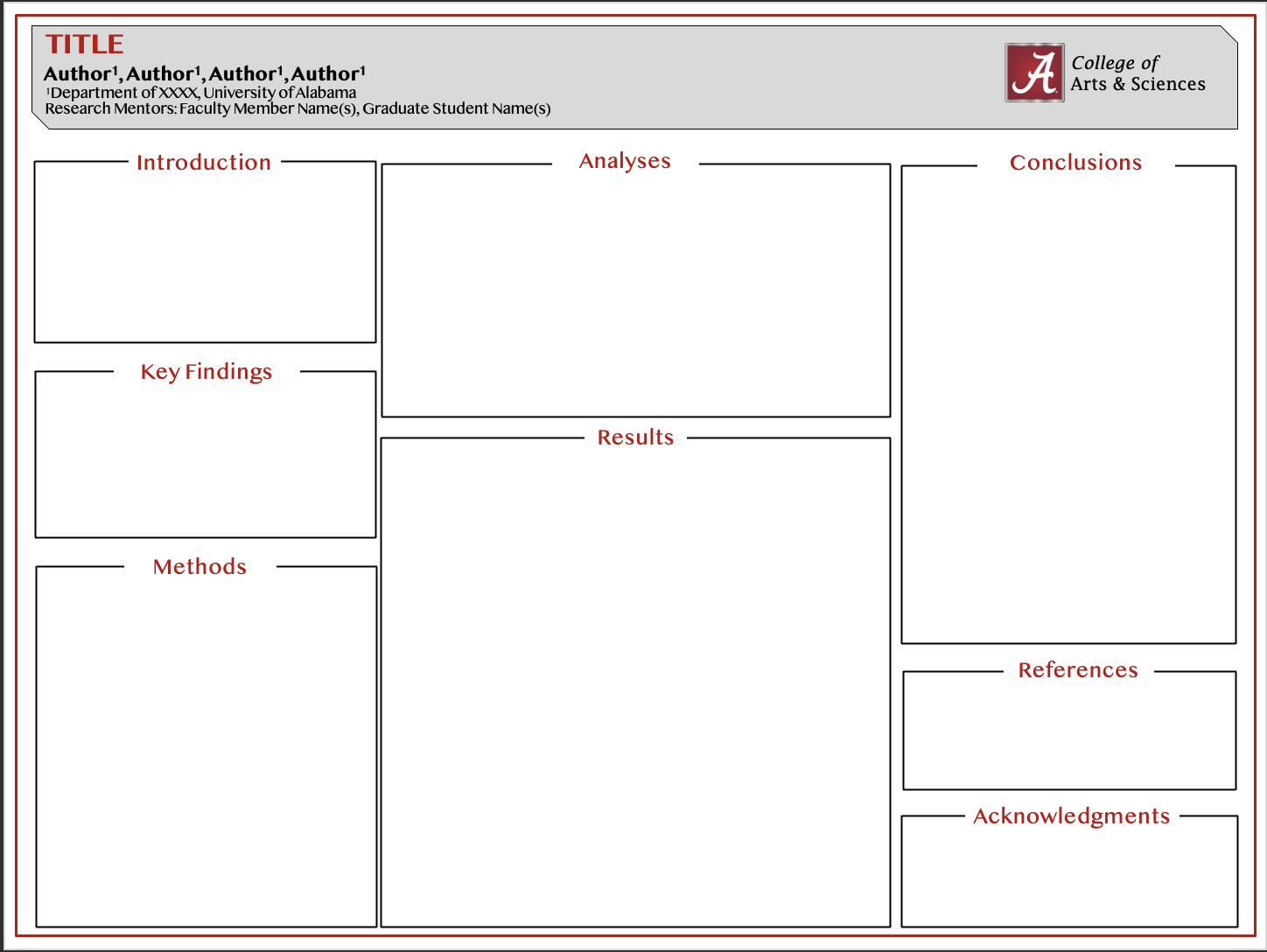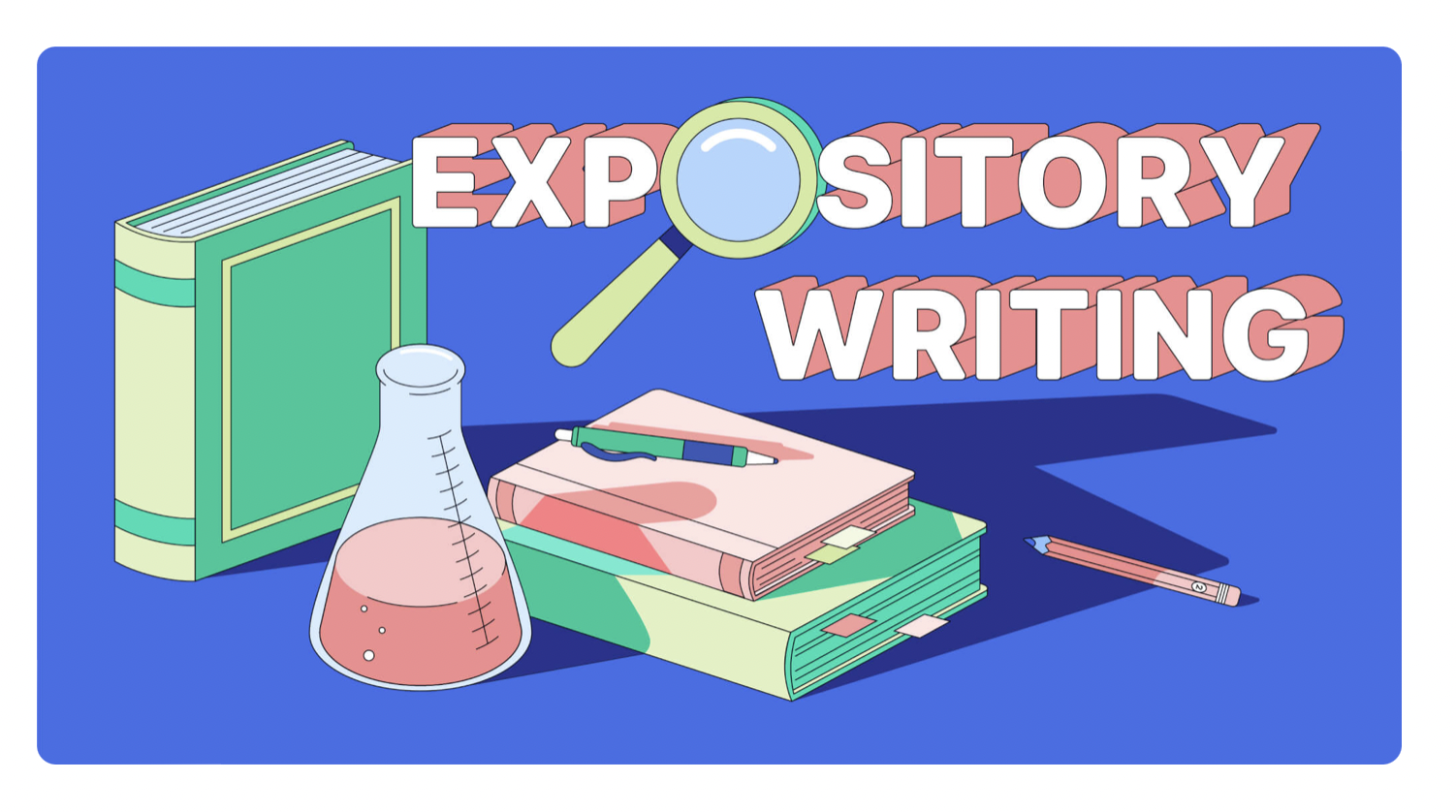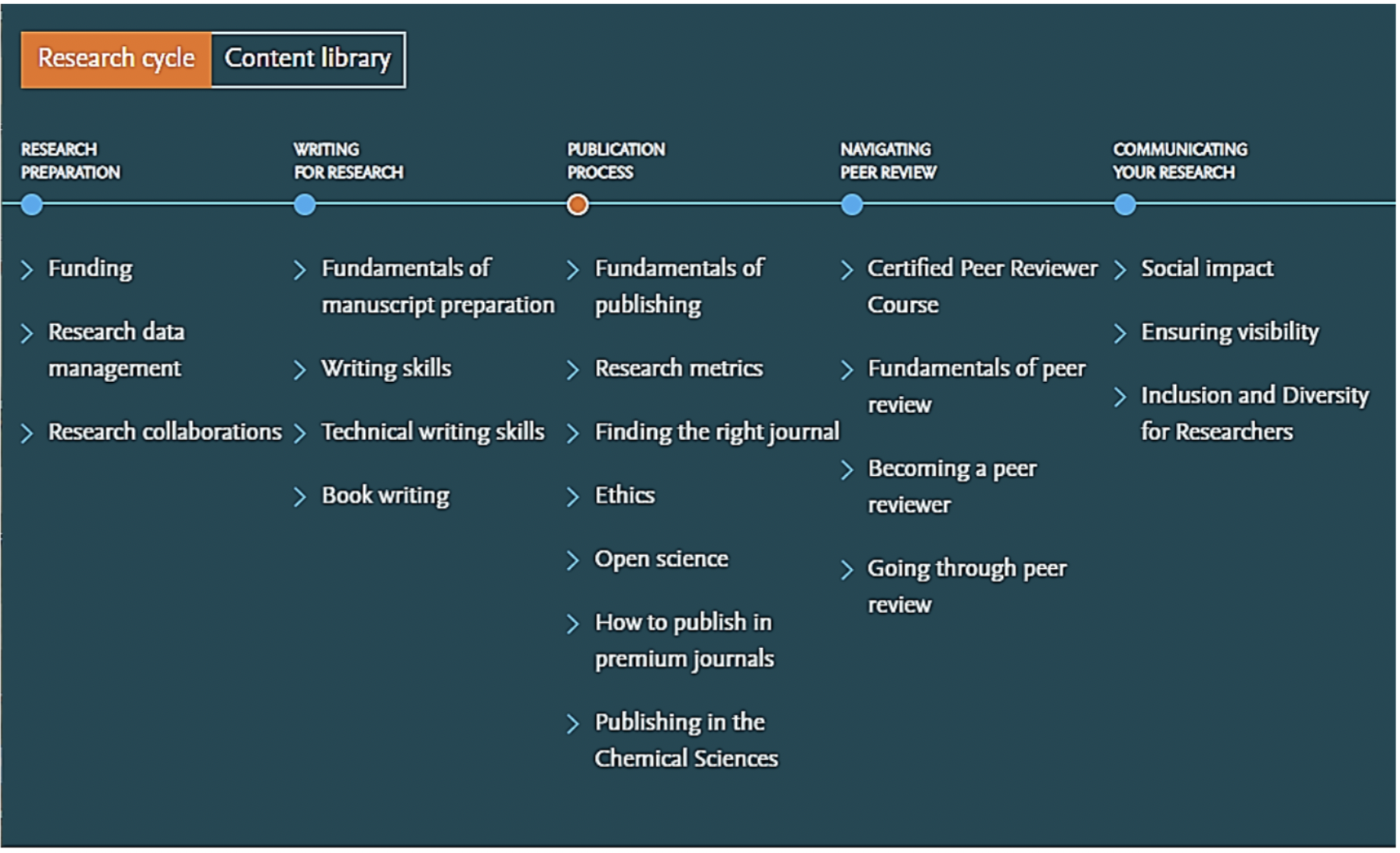BASIC TOOLS & RESOURCES FOR RESEARCHERS
By: Frances Santiago-Schwarz, PhD
Contents:
- How to read a research paper
- How to conduct a journal club
- How to create a scientific poster
- How to write a research paper
- Tips on expository writing
- Ethics in research
- Essential support tools-FREE Software:
a. writing tools
b. statistics calculator
c. graphics software
d. reference manager - Other FREE ACCESS ONLINE Resources
a. Elsevier Research Academy - Books
- Northwell Health logos
1. Introduction:
The information provided in this guide has been compiled from various resources available online to the general public and my own (F. Santiago-Schwarz) work. It serves to develop basic research skills across a variety of disciplines. The organization of the material may also serve as a step-wise process for building essential skill sets. Accordingly, reading papers will help develop comprehension, critical thinking, and organizational skills (also developed throughout).
Subsequent Journal Club activities will build on those skills and incorporate presentation skills. Poster and PowerPoint presentations will further develop presentation skills, computational and organizational skills, and, also serve as an “outline” for writing a research paper. In this regard, the PowerPoint notes section is an excellent area for including details to be placed in the particular sections of the research paper, the last area to be addressed. Additional useful material includes tips on writing an Abstract, information on key areas of research such as ethics, basic tools for data handling such as statistical software and graphics software, and, software for managing references. Other areas include a general understanding of expository writing and books on mentorship for both mentors and mentees involved in research. In addition to written material, excellent topic-specific videos are also included.
While every attempt has been made to secure free software for research support tools, some of these may be limited to basic features and more extended versions marequire purchase.
2. How to read a research paper
VIDEO LINKS:
https://www.youtube.com/watch?v=ubcGvwKfRnI
https://www.youtube.com/watch?v=t2K6mJkSWoA
3. How to conduct a Journal Club
Your Round Table Format Journal Club Presentation
- Journal Clubs are meant to foster systematic interactions among individuals with common interests.
- Even though the audience might be familiar with the topic, the presenter should discuss the content of the article in an organized and clear way.
- When presenting an article in a journal club format, keep in mind that aside from expanding on a topic that might be familiar to your audience, you are also evaluating the paper for clarity, content, and ethical conduct. A productive round table journal club involves audience participation and the presenter should guide the audience in analytical discussions related to the paper.
The following are suggested guidelines that can be used as a CHECKLIST and, “tips”:
Beforehand:
Make sure that your audience has received a copy of the article with sufficient time to review it
Be sure to prepare well in advance. You should re-read the paper as many times as necessary to familiarize yourself well
with the content. Review pertinent concepts and other material if required.
Preparing an outline following the main headings of the paper is very helpful.
Clarify any doubts that you may have related to the content, techniques used, proper use of study populations, etc.
However, don’t get caught up if you do not understand everything! An engaged audience will frequently contribute to
further understanding. It’s about scientific teamwork as well!
Prepare any handouts that might help the audience understand better. You can also use PowerPoint slides (especially if
using a virtual format).
During:
Introduce the paper; include authors, institution, journal and year published
State the topic; provide background information relevant to your paper
The purpose of the paper should be clearly stated.
The hypothesis (or question) should be stated.
Why is this study stated as important?
Put the paper in perspective; for example, is the paper an early paper in the field? Cutting edge? Frequently cited by others?
The methodology used should be reviewed
Any unfamiliar methods should be described to the audience
Any inconsistencies or potential pitfalls should be addressed (for example, human subject protection, statistics)
Figures and Tables: This may be where you guide your audience the most.
What is the take-home message of figures/tables/graphics?
Is the data clearly presented? Were controls included and appropriate?
How was the data analyzed? Was appropriate statistical analysis employed?
Are abbreviations used clearly defined?
Does the data support the authors’ discussions and conclusions?
Other?
Conclusions:
Were the conclusions drawn valid and relevant to the stated hypothesis/question/purpose?
Does the data support the question, hypothesis, or conclusions?
Are there other interpretations of the work or conclusions?
Relevance/novelty of work to field? The audience?
Future work?
4. How to create a scientific poster presentation
General Guidelines:
- https://urc.ucdavis.edu/sites/g/files/dgvnsk3561/files/local_resources/documents/pdf_documents/How_To_Make_an_Effective_Poster2.pdf
- https://ohiostate.pressbooks.pub/scientificposterguide/chapter/scientific-posters/
How to make a poster in PowerPoint:
https://www.youtube.com/watch?v=_WnhoIbfcoM
https://icue.as.ua.edu/undergraduate-research/poster-guide/
Includes slide templates- see below
5. How to write a research paper
https://www.grammarly.com/blog/how-to-write-a-research-paper/

An introduction to the publishing process: Insights into how to build an article; Top tips for writing a great abstract
How to write an ABSTRACT:
https://icue.as.ua.edu/undergraduate-research/how-to-write-an-abstract/
Writing a Research Paper, other useful LINKS:
o https://writing.wisc.edu/handbook/assignments/planresearchpaper/
o http://www.columbia.edu/cu/biology/ug/research/paper.html
Writing a Research Paper VIDEO LINKS:
https://www.youtube.com/watch?v=Vky9PDKx5KU (Excellent!)
6. Tips on Expository Writing
https://www.grammarly.com/blog/expository-writing/?gclid=CjwKCAjwmJeYBhAwEiwAXlg0ATb_W7wDTJgteyFI5rKnYnmzXgkJGnjpi_JU0d10fPf4kNiEs26JjBoCl9wQAvD_BwE&gclsrc=aw.ds
7. Ethics in Research
What Is Ethics in Research, Why Is It Important?
https://www.niehs.nih.gov/research/resources/bioethics/whatis/index.cfm (Excellent!)
Ethics in publications:
An explanation of publishing ethics; Insight into the rules you should observe; Information
about content ownership and permissions
https://researcheracademy.elsevier.com/publication-process/ethics
8. Essential Support tools-FREE Software
a. Writing tools (Grammarly, and Microsoft word also have helpful features)
b. Statistics calculator
https://www.meta-calculator.com/statistics-calculator.php
c. Graphics: BioRender; Inkscape; Microsoft Excel; GraphPad Prism; IBM SPSS Statistic, etc.
Some are free, others low cost.
https://learning.edanz.com/software-for-scientific-figures/
d. Some top reference managers (Mendeley; Endnote; Zotero; JabRef; Citavi)
https://www.ilovephd.com/top-5-free-reference-management-software-for-research/
9. Other ONLINE Resources
Excellent start-to-finish overview!
Elsevier Research Academy-
“Provides free access to countless e-learning resources designed to support researchers on every step of their research journey.”
10. BOOKS (research and mentorship):
Entering Research: A Curriculum to Support Undergraduate Graduate Research Trainees
Second Edition by Janet L. Branchaw (Author), Amanda R. Butz (Author), Amber Smith (Author)
ISBN-10 : 1319263682; ISBN-13 : 978-1319263683
Entering Mentoring: Revised Edition
by Christine Pfund (Author), Janet L.
Branchaw (Author), Jo Handelsman (Author)
Entering Mentoring is designed for those who wish to implement mentorship development programs for academic research. Publisher: W. H. Freeman; Revised edition (January 31, 2015). ISBN-10 : 1464184909. ISBN-13 : 978-1464184901
1. Introduction:
The information provided in this guide has been compiled from various resources available online to the general public and my own (F. Santiago-Schwarz) work. It serves to develop basic research skills across a variety of disciplines. The organization of the material may also serve as a step-wise process for building essential skill sets. Accordingly, reading papers will help develop comprehension, critical thinking, and organizational skills (also developed throughout).
Subsequent Journal Club activities will build on those skills and incorporate presentation skills. Poster and PowerPoint presentations will further develop presentation skills, computational and organizational skills, and, also serve as an “outline” for writing a research paper. In this regard, the PowerPoint notes section is an excellent area for including details to be placed in the particular sections of the research paper, the last area to be addressed. Additional useful material includes tips on writing an Abstract, information on key areas of research such as ethics, basic tools for data handling such as statistical software and graphics software, and, software for managing references. Other areas include a general understanding of expository writing and books on mentorship for both mentors and mentees involved in research. In addition to written material, excellent topic-specific videos are also included.
While every attempt has been made to secure free software for research support tools, some of these may be limited to basic features and more extended versions may require purchase.
2. How to read a research paper
VIDEO LINKS:
https://www.youtube.com/watch?v=ubcGvwKfRnI
https://www.youtube.com/watch?v=t2K6mJkSWoA
3. How to conduct a Journal Club
Your Round Table Format Journal Club Presentation
- Journal Clubs are meant to foster systematic interactions among individuals with common interests.
- Even though the audience might be familiar with the topic, the presenter should discuss the content of the article in an organized and clear way.
- When presenting an article in a journal club format, keep in mind that aside from expanding on a topic that might be familiar to your audience, you are also evaluating the paper for clarity, content, and ethical conduct. A productive round table journal club involves audience participation and the presenter should guide the audience in analytical discussions related to the paper.
The following are suggested guidelines that can be used as a CHECKLIST and, “tips”:
Beforehand:
Make sure that your audience has received a copy of the article with sufficient time to review it
Be sure to prepare well in advance. You should re-read the paper as many times as necessary to familiarize yourself well
with the content. Review pertinent concepts and other material if required.
Preparing an outline following the main headings of the paper is very helpful.
Clarify any doubts that you may have related to the content, techniques used, proper use of study populations, etc.
However, don’t get caught up if you do not understand everything! An engaged audience will frequently contribute to
further understanding. It’s about scientific teamwork as well!
Prepare any handouts that might help the audience understand better. You can also use PowerPoint slides (especially if
using a virtual format).
During:
Introduce the paper; include authors, institution, journal and year published
State the topic; provide background information relevant to your paper
The purpose of the paper should be clearly stated.
The hypothesis (or question) should be stated.
Why is this study stated as important?
Put the paper in perspective; for example, is the paper an early paper in the field? Cutting edge? Frequently cited by others?
The methodology used should be reviewed
Any unfamiliar methods should be described to the audience
Any inconsistencies or potential pitfalls should be addressed (for example, human subject protection, statistics)
Figures and Tables: This may be where you guide your audience the most.
What is the take-home message of figures/tables/graphics?
Is the data clearly presented? Were controls included and appropriate?
How was the data analyzed? Was appropriate statistical analysis employed?
Are abbreviations used clearly defined?
Does the data support the authors’ discussions and conclusions?
Other?
Conclusions:
Were the conclusions drawn valid and relevant to the stated hypothesis/question/purpose?
Does the data support the question, hypothesis, or conclusions?
Are there other interpretations of the work or conclusions?
Relevance/novelty of work to field? The audience?
Future work?
4. How to create a scientific poster presentation
General Guidelines:
- https://urc.ucdavis.edu/sites/g/files/dgvnsk3561/files/local_resources/documents/pdf_documents/How_To_Make_an_Effective_Poster2.pdf
- https://ohiostate.pressbooks.pub/scientificposterguide/chapter/scientific-posters/
How to make a poster in PowerPoint:
https://www.youtube.com/watch?v=_WnhoIbfcoM
https://icue.as.ua.edu/undergraduate-research/poster-guide/
Includes slide templates- see below
5. How to write a research paper
https://www.grammarly.com/blog/how-to-write-a-research-paper/

- An introduction to the publishing process: Insights into how to build an article; Top tips for writing a great abstract
- https://researcheracademy.elsevier.com/writing-research/fundamentals-manuscript-preparation
How to write an ABSTRACT:
https://icue.as.ua.edu/undergraduate-research/how-to-write-an-abstract/
Writing a Research Paper, other useful LINKS:
o https://writing.wisc.edu/handbook/assignments/planresearchpaper/
o http://www.columbia.edu/cu/biology/ug/research/paper.html
Writing a Research Paper VIDEO LINKS:
https://www.youtube.com/watch?v=Vky9PDKx5KU (Excellent!)
6. Tips on Expository Writing
https://www.grammarly.com/blog/expository-writing/gclid=CjwKCAjwmJeYBhAwEiwAXlg0ATb_W7wDTJgteyFI5rKnYnmzXgkJGnjpi_JU0d10fPf4kNiEs26JjBoCl9wQAD_BwE&gclsrc=aw.ds
7. Ethics in Research
What Is Ethics in Research, Why Is It Important?
https://www.niehs.nih.gov/research/resources/bioethics/whatis/index.cfm (Excellent!)
Ethics in publications:
An explanation of publishing ethics; Insight into the rules you should observe; Information
about content ownership and permissions
https://researcheracademy.elsevier.com/publication-process/ethics
8. Essential Support tools-FREE Software:
a. Writing tools (Grammarly, and Microsoft word also have helpful features)
b. Statistics calculator
https://www.meta-calculator.com/statistics-calculator.php
c. Graphics: BioRender; Inkscape; Microsoft Excel; GraphPad Prism; IBM SPSS Statistic, etc.
Some are free, others low cost.
https://learning.edanz.com/software-for-scientific-figures/
d. Some top reference managers (Mendeley; Endnote; Zotero; JabRef; Citavi)
https://www.ilovephd.com/top-5-free-reference-management-software-for-research/
9. Other ONLINE Resources
Excellent start-to-finish overview!
Elsevier Research Academy-
“Provides free access to countless e-learning resources designed to support researchers on every step of their research journey.”
https://researcheracademy.elsevier.com/
10. BOOKS (research and mentorship):
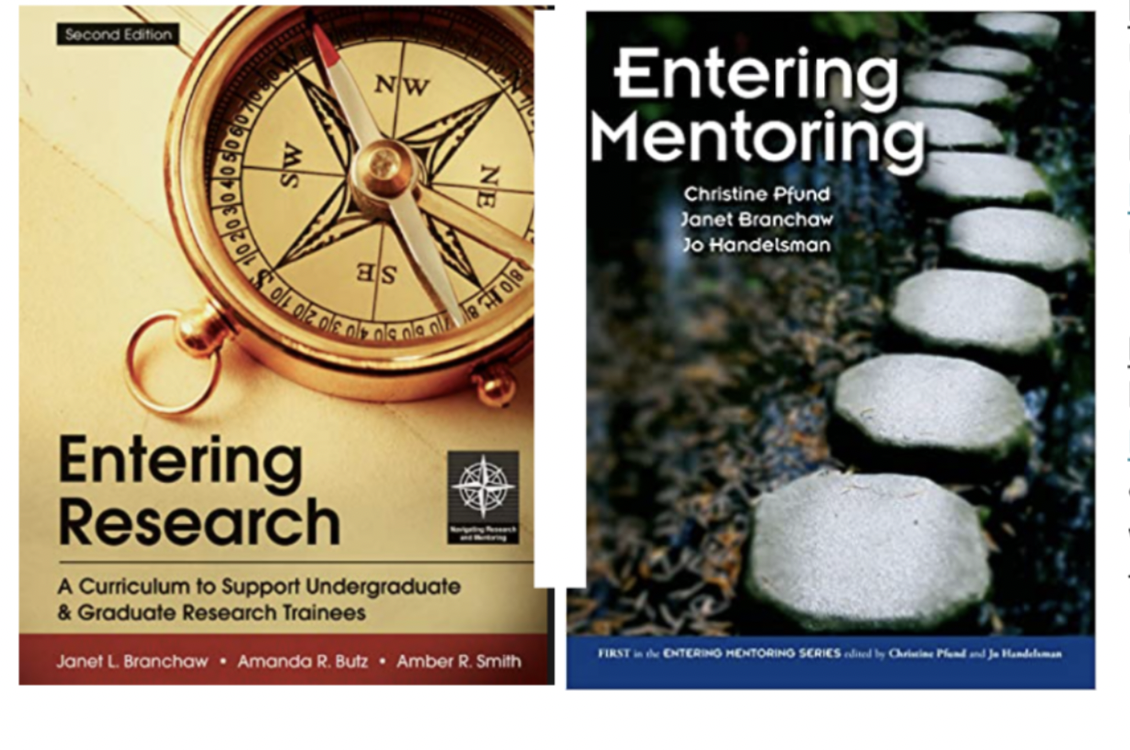 Entering Research: A Curriculum to Support Undergraduate Graduate Research Trainees
Entering Research: A Curriculum to Support Undergraduate Graduate Research Trainees
Second Edition by Janet L. Branchaw (Author), Amanda R. Butz (Author), Amber Smith (Author)
ISBN-10 : 1319263682; ISBN-13 : 978-1319263683
Entering Mentoring: Revised Edition
by Christine Pfund (Author), Janet L.
Branchaw (Author), Jo Handelsman (Author)
Entering Mentoring is designed for those who wish to implement mentorship development programs for academic research. Publisher: W. H. Freeman; Revised edition (January 31, 2015). ISBN-10 : 1464184909. ISBN-13 : 978-1464184901




